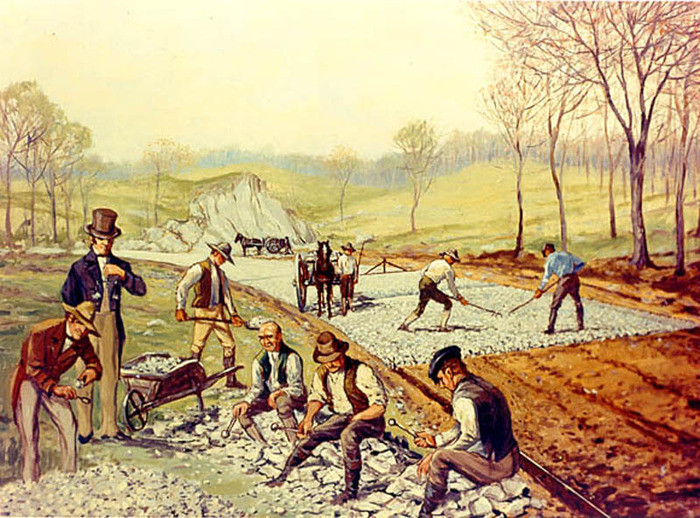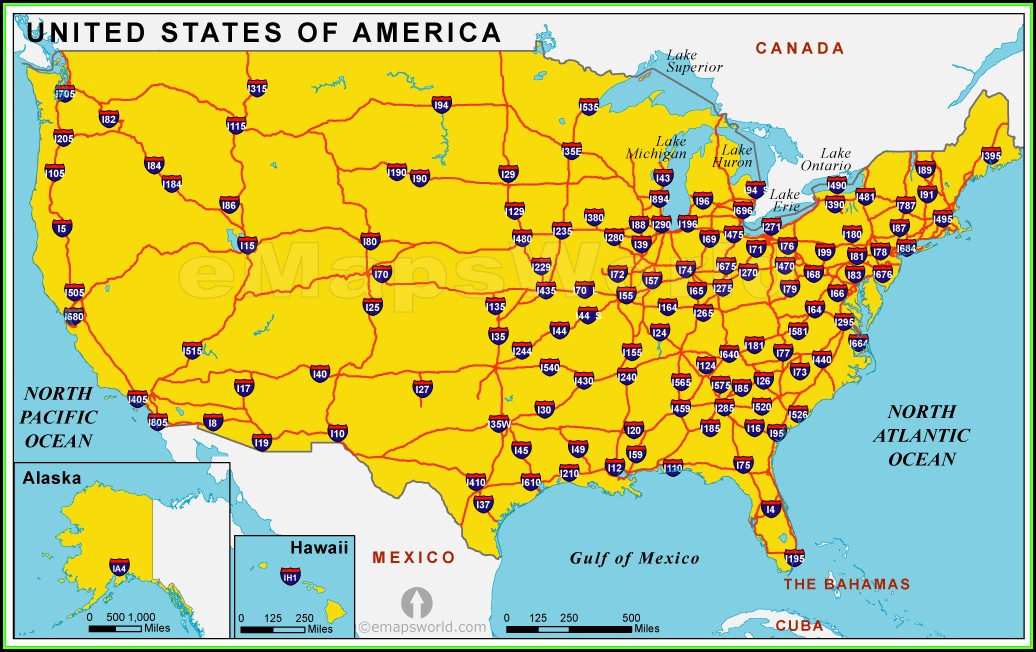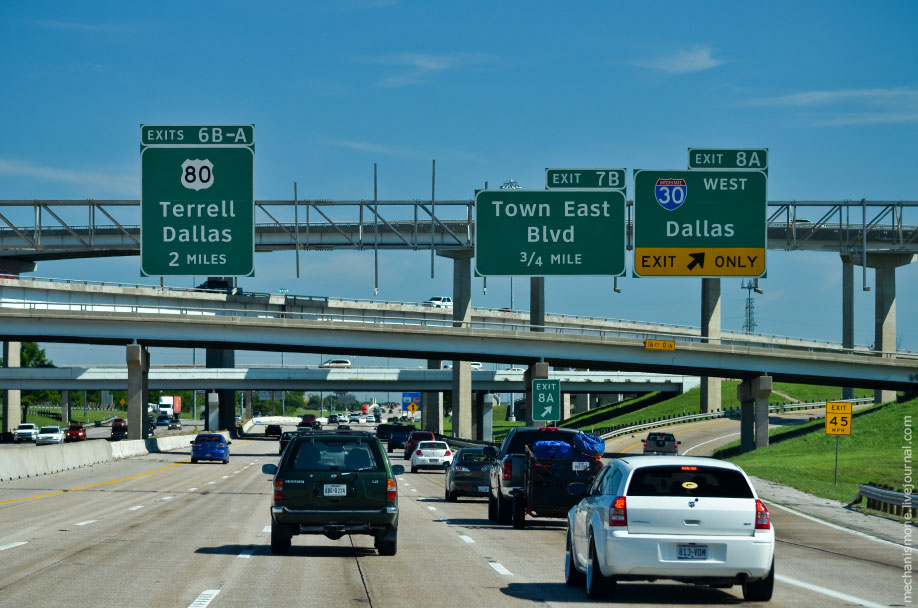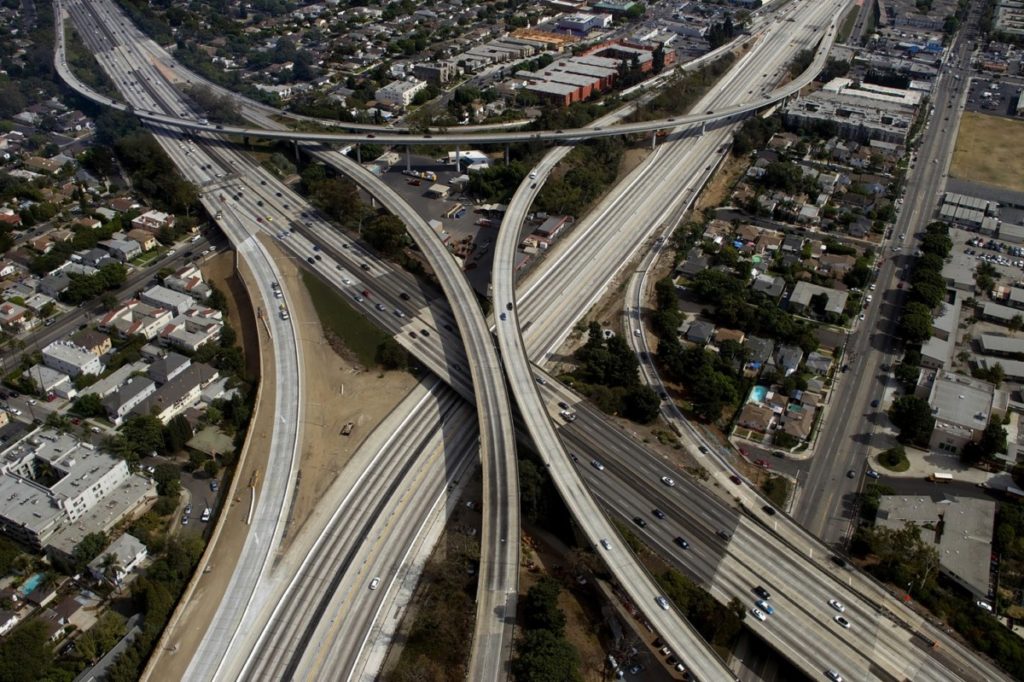Major highways in the United States
The U.S. highway system today, without exaggeration, can be called one of the most modern in the world. This is due not only to the quality of the pavement (the highways there are perfectly flat), but also to a very convenient system of interchanges, well thought-out widths, high capacity and impressive weight loads.
Table of contents
However, this was not always the case. Quality roads in America did not appear overnight; they were built over many years and have undergone a long evolution. About the history of U.S. highways and their features will be discussed in our today's material.
History of roads in the United States
In the process of building the famous American highways, a lot was adopted from the scrupulous Germans. However, very soon the Americans overstepped the standards of Germany and created a system that we see today and which has proven itself so well that it is actively copied by other states.
ImportantThe modern road system in America was conceived in the early 20th century. When the country saw a boom in the automobile industry, which began with Henry Ford, making cars available to a wide range of consumers.
It was at that time that Americans began to move en masse from public transport to private, because they realized how much more convenient it was to go where and when they wanted, without adjusting for anyone.
But here's the problem - there were no roads in the U.S. at that time. Here is what statistics says about it: in 1901, there were only 1200 kilometers of roads in the whole country, and it was the most enormous territory of the United States!
Only a thousand and something miles had some kind of surface - whether asphalt, brick or tile. The rest was typical dirt and was more of a direction than a road.
Realizing that something had to be done about it, the state government decided in 1903 to impose an automobile toll. The received, thus, means (and they were collected, as it is easy to guess, from owners of personal cars) have been spent for road building.
However, another problem surfaced here: at that time, the country had not developed construction technology that would enable the construction of highways of good quality quickly and without tremendous effort.

Roads were then built in an artisanal way and virtually by hand - with shovels and manual steam rollers. It was simple: first, workers spread gravel on the more or less prepared surface, then lightly worked it with a roller. The resulting surface finish bore little resemblance to a highway, and the situation at some point led to a flurry of indignation on the part of motorists. In 1910, they appealed to the nation's leaders, urging them to create a unified U.S. highway system.
A small group of enthusiasts interested in construction put forward a pilot project for a highway that would connect San Francisco with New York City. The highway was named "The Lincoln Highway", it was approved by the government, and work even began on the implementation of the idea, but then the war intervened.
By the end of hostilities, the condition of what were then called roads in America had deteriorated many times over - the traffic of heavy army trucks affected. The final straw was the embarrassment of the victorious convoy. It was supposed to march on the failed Lincoln Highway, but because of its extremely poor condition it lasted for almost two months, and cost a couple dozen trucks, which either turned over or got stuck off-road and never reached their destination.
Thereafter, the highway system in the United States was designed and built with remarkable rapidity. The reorganization of highways was undertaken by Thomas MacDonald, and $75 million was allocated to it, which at that time was a colossal sum. As a result - if in 1901 in the country was only 1200 km of roads, then in 1938 they were 448 thousand km, and most of them were covered with concrete. Another 2 years later the total number of kilometers of quality road pavement amounted to 960 thousand kilometers.
.jpg)
The modern American road system as it is today was conceived in the late 1930s. As mentioned above, the German autobahns were taken as the basis and subjected to certain modifications. Due to a number of reasons, the project was approved much later, in 1952, the construction began even later - 4 years later.
Then, in 1956, key highway standards were approved, according to which the highways were to be accessible for various categories of vehicles, provide the necessary speed limits, have a certain width, number of lanes, etc.
Nebraska became the first state, where all roads were built according to the specified project. Its realization there was finished in 1974. In 1986 the inauguration of the highway connecting two coasts took place.
It happened in Salt Lake City. The second such highway was delivered in 1991. That the system, planned back in 1952, finally, was built, reported in the fall of 1992, but some parts of the U.S. roads are arranged and to this day.
Americas Roads: Length and Quality
In terms of length of roads, the United States ranks first in the world. According to the Free Encyclopedia, as of 2018, the total length of roads in the United States was almost 7 million 150 thousand km, of which 77.9 thousand km are good highways.

Quality of highways in United States is on the highest level, but certain problems still exist. Despite the fact that, as mentioned above, in 1992 the authorities pompously declared the end of the project approved by Eisenhower, construction is still going on in several states. So, for example, I-95 and I-70 never managed to make the highway continuous because of the resistance of local residents, who for some reason are against the construction.
They could not connect the Pennsylvania toll road and the I-70 highway near Breezewood with quality pavement. To get to the latter, motorists have to wind circles around Interstate 30.
Although the government has repeatedly offered various solutions to the problem, the situation is still in limbo because of protests from people who, by the way, suffer from the lack of a road themselves.

The reorganization, which we talked about a few paragraphs above, affected not only the highway system, but also their names, the so-called indexing. All highways in America are now numbered US, with even-numbered roads going from West to East and even-numbered roads going from North to South. Odd-numbered roads run from North to South, with numbers increasing from East to West.
If you understand the principle, it is not difficult to understand the indexing. This makes it easy to navigate, even for people who are new to the United States. Good, quality highways crisscross the entire country, within population centers they become streets, divided into different numbers of lanes, etc.
U.S. numbered highway system
The numbering system that exists today was developed in 1957, but was not adopted until 1973. In the continental part of the state, the main highways connecting different states (often called two-digit highways) are designated by numbers that are less than 100. Numbers that are divisible by 5 are major among the key highways.
But even in such a seemingly flawless, check system there are exceptions. For example, there are highways with identical two-digit numbers in different parts of the state. The reason for this was the change in the numbering system in 1973, already mentioned by us, before which long access roads were referred to by numbers with letters.
There is also the concept of parallelism in the road system, when 2-digit numbering is allowed to indicate the continuity between the control points, which are the main ones.
Roads numbered with three digits are auxiliary roads. Such highways, and they are also interstate highways, are of three kinds:
- circular;
- radial;
- made in the form of a branch from the main road.
Their main task is to serve the urban area. The numbers in this case are marked with 3 digits, 2 of which are the number of the nearest interstate highway. If the branch line leaves the main highway with a two-digit designation, but does not return to it, its number begins with an even number.
Classification of U.S. Highways

Roads in the U.S. are divided into different categories: rural roads, the so-called state highways (intrastate), U.S. highways and the legendary interstate (those that connect two different states). The higher the category of highway, the better its condition and quality of coverage.
The roads that lead from one state to the next are gorgeous; they are beautifully lit, characterized by the presence of excellent markings, and the pavement is perfectly smooth. What is remarkable: there are absolutely no intersections on the highways of this category, which helps to reduce the accident rate and allows vehicles to move at great speed.
To get to the interstate, you need to use the special interchanges - exits, called. Each of them has an individual number, which is marked on the map. With the help of "exits" interstate roads are connected to interstate roads.
The difference between highways and freeways
Highways in the U.S. are what, without exaggeration, can be called a national treasure. Driving on them is a pleasure.
On conventional highways there are so-called service areas, where there are parking lots, catering establishments, grocery stores, gas stations, motels, etc. There are no service areas on highways - they are away from the big roads, mostly on the outskirts of communities.
Some rules of the road
To travel comfortably in your own car in America you must have a detailed paper map of roads. Navigator, electronic maps - it is certainly good, but in a remote location of the connection with the Internet, and mobile communications may not be, and the paper has never failed anyone.
In the U.S. there are many toll roads, bridges and tunnels, to drive on them, you must pay. The fare depends on the importance of the crossing and the distance to be covered. The beginning of the toll section is announced by a barrier. You can pay the toll at the clerk, but lately self-pay terminals are being used more and more often.
All roads in the United States are equipped with surveillance cameras. In the case of an accident a message is immediately sent to the appropriate services and a tow truck or roadside assistance is dispatched to the scene. Interestingly, the camera recordings are freely accessible and can be viewed by anyone in any city.

On the roads marked I and US, you cannot stop without a valid reason - you may get a fine. These measures are taken to improve safety. If your car breaks down, stop only on the side of the road on the right side, as the left lane is the fastest in the country.
If there is a broken-down car on the side of the highway, you should move to the left lane when passing it, if possible. The same applies if there is a special service vehicle with flashing beacons on. If it is impossible to go left, you should slow down to a speed of 80 km per hour.
The bottom line is
The United States of America is a great power, and it is no surprise that one of the best road networks in the world is in the United States. There are excellent road networks in Europe, such as Germany or Norway, but none of those countries have such distances. Highways unite America.




